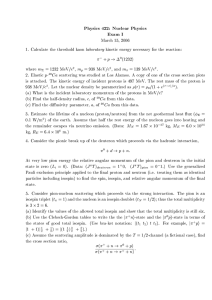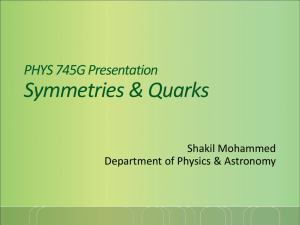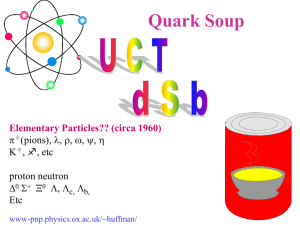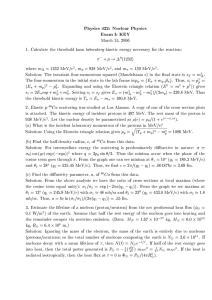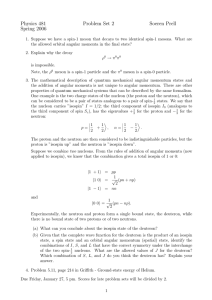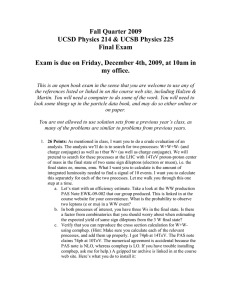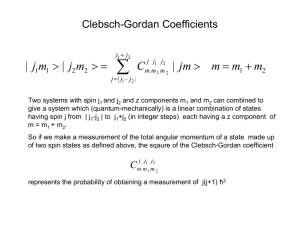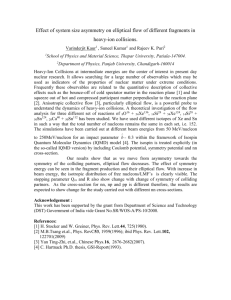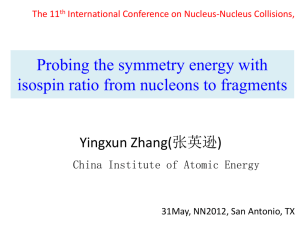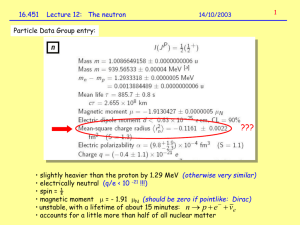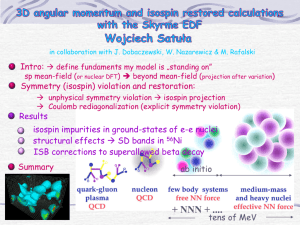Isospin - Physical Mathematics
advertisement
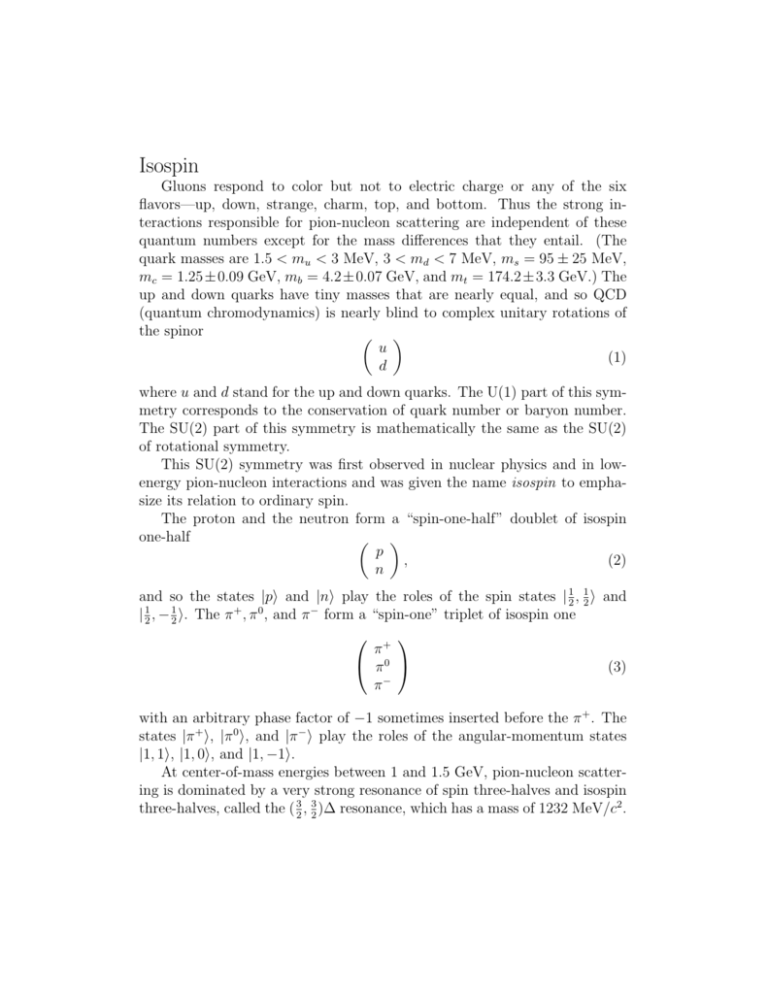
Isospin Gluons respond to color but not to electric charge or any of the six flavors—up, down, strange, charm, top, and bottom. Thus the strong interactions responsible for pion-nucleon scattering are independent of these quantum numbers except for the mass differences that they entail. (The quark masses are 1.5 < mu < 3 MeV, 3 < md < 7 MeV, ms = 95 ± 25 MeV, mc = 1.25±0.09 GeV, mb = 4.2±0.07 GeV, and mt = 174.2±3.3 GeV.) The up and down quarks have tiny masses that are nearly equal, and so QCD (quantum chromodynamics) is nearly blind to complex unitary rotations of the spinor u (1) d where u and d stand for the up and down quarks. The U(1) part of this symmetry corresponds to the conservation of quark number or baryon number. The SU(2) part of this symmetry is mathematically the same as the SU(2) of rotational symmetry. This SU(2) symmetry was first observed in nuclear physics and in lowenergy pion-nucleon interactions and was given the name isospin to emphasize its relation to ordinary spin. The proton and the neutron form a “spin-one-half” doublet of isospin one-half p , (2) n and so the states |pi and |ni play the roles of the spin states | 21 , 12 i and | 21 , − 12 i. The π + , π 0 , and π − form a “spin-one” triplet of isospin one + π π0 (3) − π with an arbitrary phase factor of −1 sometimes inserted before the π + . The states |π + i, |π 0 i, and |π − i play the roles of the angular-momentum states |1, 1i, |1, 0i, and |1, −1i. At center-of-mass energies between 1 and 1.5 GeV, pion-nucleon scattering is dominated by a very strong resonance of spin three-halves and isospin three-halves, called the ( 23 , 32 )∆ resonance, which has a mass of 1232 MeV/c2 . This resonance comes in four charge states ++ Σ Σ+ 0 . Σ − Σ (4) The charge Q any hadron made of up and down quarks is the third component of its isospin plus half its baryon number Q = I3 + B . 2 (5) Weak isospin IW is the generalization of isospin to the three “generations” or “families” of quarks u c t , , . (6) d s b In terms of it, the charge is Q = I3W + B . 2 (7) In problem 6.2, the initial state |p, π − i is a linear combination of the states | 23 , − 12 i and | 21 , − 12 i . Almost all of the scattering is due to the | 32 , − 21 i state. So the final state is that linear combination of the states |n, π 0 i and |p, π − i that is the | 32 , − 12 i state.
